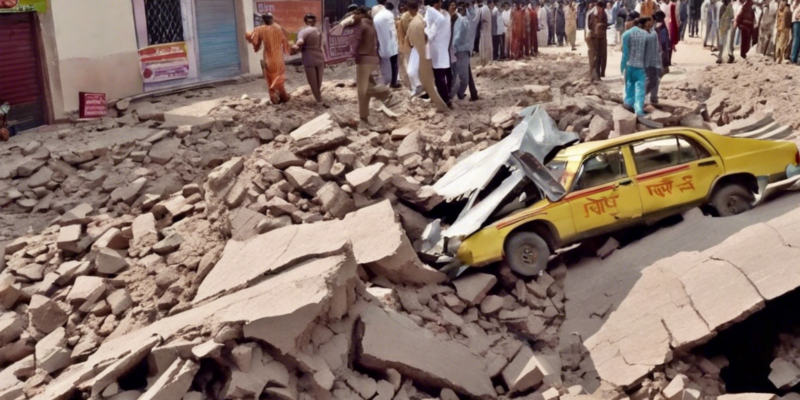The recent Patna earthquake has brought devastation to the capital city of Bihar, India. With a magnitude of 5.8 on the Richter scale, the earthquake struck on [insert date] and left a trail of destruction in its wake. The aftermath has been chaotic, with rescue operations underway and thousands left displaced and in need of assistance.
In this comprehensive article, we delve into the details of the Patna earthquake, exploring its causes, impacts, response efforts, and what individuals can do to prepare for and respond to such disasters in the future.
Understanding Earthquakes
Earthquakes are natural disasters caused by the shifting of tectonic plates beneath the Earth’s surface. The sudden release of energy generates seismic waves that result in the shaking of the ground. The point on the Earth’s surface directly above the earthquake’s origin is known as the epicenter.
The Patna Earthquake: Causes and Impacts
The Patna earthquake was caused by the movement of the Indian Plate as it collides with the Eurasian Plate, leading to stress accumulation and eventual release in the form of seismic waves. The earthquake not only caused buildings to collapse but also triggered landslides and infrastructure damage across the region.
The impacts of the earthquake were widespread, with casualties reported and many more left injured and homeless. The destruction of homes, schools, and hospitals has exacerbated the situation, leaving the affected population vulnerable and in urgent need of aid.
Response and Relief Efforts
In the aftermath of the Patna earthquake, local authorities, emergency services, and humanitarian organizations have mobilized to provide relief and assistance to those affected. Search and rescue operations are underway to locate and extract survivors trapped under the rubble, while medical teams are tending to the injured.
Temporary shelters have been set up to accommodate the displaced population, and essential supplies such as food, water, and medical supplies are being distributed. However, the scale of the disaster poses significant challenges to relief efforts, necessitating support from neighboring regions and the international community.
How to Prepare for Earthquakes
While earthquakes cannot be predicted, individuals and communities can take precautionary measures to mitigate the risks associated with such disasters. Some key steps to prepare for earthquakes include:
- Creating an emergency plan: Establishing communication and evacuation plans with family members and neighbors.
- Securing furniture and objects: Bolting heavy furniture to walls and securing breakable objects to prevent injuries during an earthquake.
- Stocking up on supplies: Maintaining a supply of non-perishable food, water, medications, and first aid kits.
- Building an emergency kit: Including essentials such as flashlights, batteries, blankets, and personal hygiene items.
FAQs About Earthquakes
1. What should I do during an earthquake?
During an earthquake, drop, cover, and hold on. Drop to the ground, take cover under a sturdy piece of furniture, and hold on until the shaking stops.
2. How can I protect my home from earthquake damage?
Securing heavy furniture, installing latches on cabinets, reinforcing walls, and retrofitting foundations can help protect your home from earthquake damage.
3. Is it safe to use elevators during an earthquake?
No, it is not safe to use elevators during an earthquake. Use stairs instead and avoid standing near windows or heavy objects.
4. What should I include in my earthquake emergency kit?
Your emergency kit should include water, non-perishable food, medications, first aid supplies, a flashlight, batteries, a whistle, blankets, and personal hygiene items.
5. How can I support earthquake relief efforts in affected areas?
You can support earthquake relief efforts by donating to reputable organizations providing aid, volunteering with local relief groups, or spreading awareness about the situation to encourage others to help.
The Patna earthquake serves as a stark reminder of the destructive power of natural disasters and the importance of preparedness and swift response in saving lives and mitigating the impacts. By educating ourselves, taking proactive measures, and supporting relief efforts, we can work towards building more resilient communities capable of facing such challenges head-on.

Comments